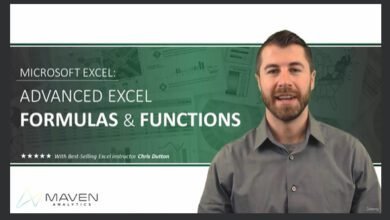SQL & MySQL Subqueries: Understanding the weird parts – 2023 2023-3


SQL & MySQL Subqueries: Understanding the weird parts – 2023 2023-3
Description
SQL & MySQL Subqueries: Understanding the weird parts course – 2023. Take your data management skills to the next level with this comprehensive course! Whether you are a beginner or an experienced SQL user, learn to effectively use subqueries to extract and manipulate data from your database. Learn SQL and MySQL SUBQUERY – Understanding the Odd Parts With this course, you’ll explore different types of subqueries, including nested, correlated, scalar, row, column, and inline view subqueries. You will also learn essential SQL techniques like JOIN, EXISTS, WHERE, HAVING, GROUP BY and many more. Our expert instructor will show you how to use these techniques to solve real-world problems and how to combine subqueries with other SQL techniques for maximum performance. By the end of this course, you will have a deep understanding of how subqueries work and how to use them to extract the information you need from your database. You will be able to create complex and powerful queries to analyze and manage your data. This course is designed for users of all levels, from beginners to experienced SQL users, and covers a wide range of databases including MySQL, PostgreSQL, Microsoft SQL Server, and Oracle Database. Our step-by-step approach starts with the basics and builds to more advanced techniques, giving you a comprehensive understanding of SQL subqueries. With practical exercises and hands-on projects, you will gain hands-on experience working with sub-questions. Our experienced trainer and online support community are always ready to answer your questions. Enroll in this course now and take your data management skills to the next level. Master SQL subqueries and become an expert in extracting and manipulating data from your databases.
What you will learn in the course SQL & MySQL Subqueries: Understanding the weird parts – 2023
Learning SQL and MySQL SUBQUERY – understanding the odd parts
Correlated, nested, scalar, single-row, multi-row, CTE, and inline view subqueries
Learn how to write subqueries to select multiple data tables using 2 to 14 subqueries in a single query.
Different ways to create subqueries that return a single value or multiple values.
How to use sub-questions in SELECT, FROM, WHERE and HAVING clauses.
Concept of related subqueries that depend on outer query values and how they are used in SQL.
How to use subqueries to solve complex problems such as finding maximum or minimum values and records that do not have corresponding entries in other tables.
The difference between IN, EXISTS and ANY/ALL operators in subqueries and when to use each.
How to use subqueries to create more complex queries and better understand the structure and relationships in a database.
Hands-on practice with a variety of examples, exercises, and sub-challenges to build skill and confidence in using sub-queries in SQL.
This course is suitable for people who
Those who have basic knowledge of SQL and wish to improve
Data analysts, business intelligence professionals and aspiring SQL developers who want to improve their SQL skills.
Database administrators who want to write more efficient and complex SQL queries
Anyone who has struggled with SQL subqueries in the past and wants to learn how to use them effectively.
People who want to become experts in using SQL subqueries for data analysis and data management tasks.
Details of the SQL & MySQL Subqueries course: Understanding the weird parts – 2023
Publisher: Udemy
Lecturer: Donatus Obomighie
Training level: beginner to advanced
Training duration: 9 hours and 50 minutes
Number of courses: 630
Installation guide
After Extract, view with your favorite Player.
English subtitle
Quality: 720p




